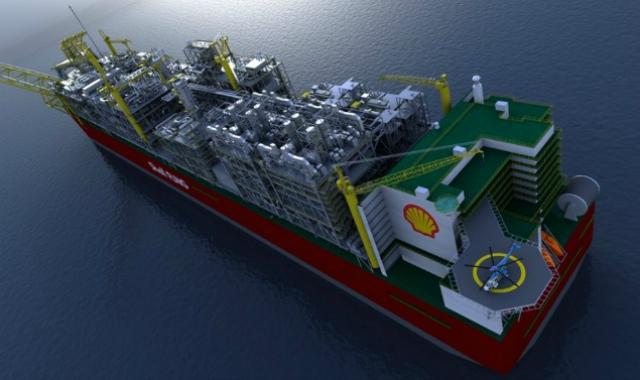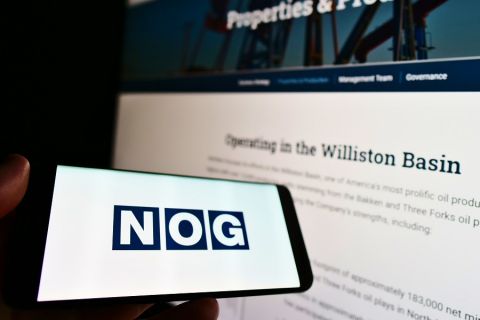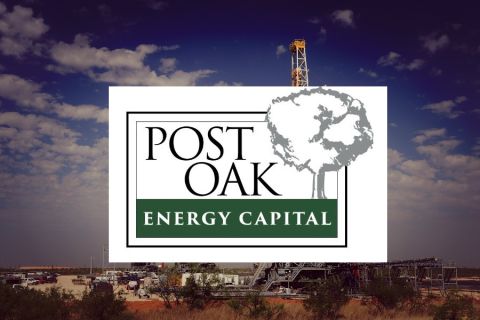
Shell’s Prelude FLNG, shown in an artist’s impression, is under construction in South Korea and scheduled to be deployed offshore Australia in 2017. Source: Royal Dutch Shell
A KPMG Global Energy Institute report concludes that floating LNG (FLNG) technology will eventually be viable, but a slow start to compensate for innovation can be expected.
“Floating LNG can save costs and time if executed well,” said Hilda Mulock Houwer, Qatar-based partner and global advisory leader for energy and natural resources. “As experience is gained, future projects may achieve first gas production quicker and more cheaply.”
That experience begins this year when the first two projects—Pacific Rubiales Energy Corp.’s Caribbean FLNG offshore Colombia and Petronas’ PFLNG-1 offshore Malaysia—begin operations. Shell’s Prelude is scheduled to be deployed off the coast of western Australia in 2017, followed by a second Petronas project, also offshore Malaysia, in 2018.
Between 2014 and 2020, an estimated $60 billion will be invested in FLNG projects worldwide, with production expected to reach 44 million tonnes per annum (mtpa) by 2019, or about 7.5% of global output, said Jonathan Smith, KPMG’s Perth, Australia-based partner in energy and natural resources and oil and gas sector leader.
“By 2022, there could be 22 floating LNG vessels in place, with another 22 ‘possibles,’” Smith said.
KPMG’s team devised two scenarios for FLNG development:
- Niche: A few companies will utilize the technology to address specific problems. In this scenario, land-based plants continue to be the default option chosen by the industry, especially if the first facilities encounter cost or technical problems, or costs decline for landbased plants; and
- Standard: In this scenario, FLNG would be routinely considered along with land-based options. The technology would be open to a wider range of fields and companies, with new pricing methods and unconventional gas-to-LNG options available. This scenario opens up the possibilities of a faster, more flexible and diverse LNG industry.
Mulock Houwer compared the development of FLNG to that of floating production, storage and offloading vessels. That technology experienced a modest deployment of 50 vessels from 1977 to 2000, then a rapid acceleration accompanied technical familiarity that led to the installation of 100 vessels between 2000 and 2010.
While FLNG would appear to be a necessary component of the expanding global LNG industry, set to double its 2012 capacity of 250 mtpa by 2030, numerous challenges linger, especially for Australia. They include rising labor costs, workforce activism, community opposition, environmental permit approvals, remote construction locations and exchange rate movements that can be unfavorable to projects.
Recommended Reading
Weatherford M&A Efforts Focused on Integration, Not Scale
2024-04-25 - Services company Weatherford International executives are focused on making deals that, regardless of size or scale, can be integrated into the business, President and CEO Girish Saligram said.
Range Resources Holds Production Steady in 1Q 2024
2024-04-24 - NGLs are providing a boost for Range Resources as the company waits for natural gas demand to rebound.
Atlas Energy Solutions Declares Dividend
2024-02-09 - Atlas Energy’s dividend represents a 5% increase from the previous quarter’s dividend.
Northern Oil and Gas Ups Dividend 18%, Updates Hedging
2024-02-09 - Northern Oil and Gas, which recently closed acquisitions in the Utica Shale and Delaware Basin, announced a $0.40 per share dividend.
Permian E&P Midway Energy Partners Secures Backing from Post Oak
2024-02-09 - Midway Energy Partners will look to acquire and exploit opportunities in the Permian Basin with backing from Post Oak Energy Capital.






